Fisher, Peter D'Oliveyra (Flying Officer)
Killed in Flying Accident 1954-July-20


Birth Date: 1930-March-12
Born: Tokyo, Japan
Parents: Son of Isaac J. and Oliveyra J. Fisher of Portland, Oregon. Brother of Josephine V. Fisher.
Spouse:
Home: Tokyo, Japan
Enlistment: Vancouver, British Columbia
Enlistment Date: 1949-January-01
Service
RCAF
Unit
420 Sqn- Squadron
Pugnamus Finitum We fight to the finish
Base
Rank
Flying Officer
Position
Pilot
Service Numbers
130071
Crew or Other Personnel
Mustang 9291
Mustang serial: 9291
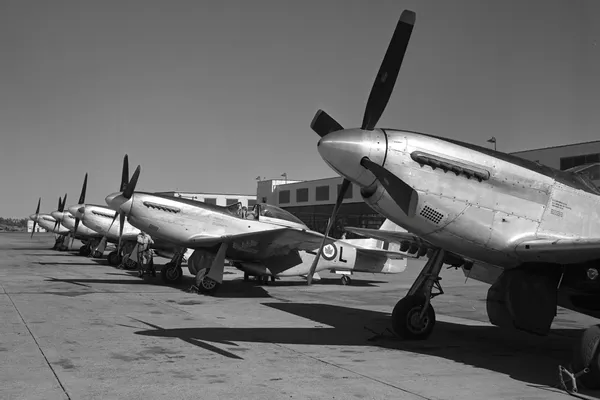
North American Mustang Mk. IV, RCAF (Serial No. 9253), coded BA-S,
No. 424 Squadron, Hamilton, Ontario
Chris Charland noted that the Mustang in the forefront is former USAF P-51D (Serial No. 44-74502A).
The North American Aviation P-51 Mustang is an American long-range, single-seat fighter and fighter-bomber used during World War II and the Korean War, among other conflicts. The Mustang was designed in April 1940 by a team headed by James Kindelberger of North American Aviation (NAA) in response to a requirement of the British Purchasing Commission. The Purchasing Commission approached North American Aviation to build Curtiss P-40 fighters under license for the Royal Air Force (RAF). Rather than build an old design from another company, North American Aviation proposed the design and production of a more modern fighter. The prototype NA-73X airframe was rolled out on 9 September 1940, 102 days after the contract was signed, and first flew on 26 October
The Mustang was designed to use the Allison V-1710 engine, which had limited high-altitude performance in its earlier variants. The aircraft was first flown operationally by the RAF as a tactical-reconnaissance aircraft and fighter-bomber (Mustang Mk I). Replacing the Allison with a Rolls-Royce Merlin resulted in the P-51B/C (Mustang Mk III) model, and transformed the aircraft's performance at altitudes above 15,000 ft (4,600 m) (without sacrificing range), allowing it to compete with the Luftwaffe's fighters. The definitive version, the P-51D, was powered by the Packard V-1650-7, a license-built version of the two-speed, two-stage-supercharged Merlin 66, and was armed with six .50 caliber (12.7 mm) AN/M2 Browning machine guns.
Canada had five squadrons equipped with Mustangs during the Second World War. RCAF Nos. 400, 414 and 430 Squadrons flew Mustang Mk. Is (1942"“1944) and Nos. 441 and 442 Squadrons flew Mustang Mk. IIIs and Mk. IVAs in 1945. Wikipedia and Harold Skaarup web page
Unit Desciption
420 Sqn Pugnamus Finitum ("Snowy Owl")
History of the Squadron during World War II (Aircraft: Hampden I, Wellington III, X, Halifax III, Lancaster X)
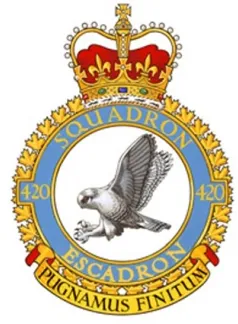
420 Squadron RCAF was the fourth RCAF bomber unit formed overseas in WWII. It was formed at Waddington, Lincolnshire, UK ![]() on December 19, 1941 as a unit of No 5 Group of RAF Bomber Command flying Handley Page Hampden Mk 1 aircraft, with the squadron code letters PT. In early August 1942 the squadron transferred to No 4 Group of Bomber Command, and was based at Skipton-on-Swale, Yorkshire
on December 19, 1941 as a unit of No 5 Group of RAF Bomber Command flying Handley Page Hampden Mk 1 aircraft, with the squadron code letters PT. In early August 1942 the squadron transferred to No 4 Group of Bomber Command, and was based at Skipton-on-Swale, Yorkshire ![]() : at this time it was equipped with Vickers Wellington Mk. III aircraft. In October 1942 it moved to Middleton St. George, Durham
: at this time it was equipped with Vickers Wellington Mk. III aircraft. In October 1942 it moved to Middleton St. George, Durham ![]() , where on January 1, 1943 it became a unit of the newly-created no. 6 (RCAF) Group of Bomber Command. It remained there until May 1943, when, by now flying tropicalized Wellington Mk X aircraft, it flew to Tunisia in North Africa to join No 331 (RCAF) Wing of No. 205 Group. From the bases of Kairouan/Zina
, where on January 1, 1943 it became a unit of the newly-created no. 6 (RCAF) Group of Bomber Command. It remained there until May 1943, when, by now flying tropicalized Wellington Mk X aircraft, it flew to Tunisia in North Africa to join No 331 (RCAF) Wing of No. 205 Group. From the bases of Kairouan/Zina ![]() and Hani East Landing Ground
and Hani East Landing Ground ![]() (both locations approximate)it attacked targets in Sicily and Italy as part of the invasion force. In October, the squadron returned by sea to England, leaving its aircraft behind, and rejoined 6 Group at Dalton, Yorkshire, re-equipping with Handley Page Halifax Mk. III aircraft. The squadron finally moved to Tholthorpe, Yorkshire
(both locations approximate)it attacked targets in Sicily and Italy as part of the invasion force. In October, the squadron returned by sea to England, leaving its aircraft behind, and rejoined 6 Group at Dalton, Yorkshire, re-equipping with Handley Page Halifax Mk. III aircraft. The squadron finally moved to Tholthorpe, Yorkshire ![]() in December 1943, where it remained until the end of hostilities in Europe. From April 1945 the squadron re-equipped with Lancaster Mk. X aircraft, although they were not used operationally. In June 1945 the squadron flew its aircraft to Debert, Nova Scotia
in December 1943, where it remained until the end of hostilities in Europe. From April 1945 the squadron re-equipped with Lancaster Mk. X aircraft, although they were not used operationally. In June 1945 the squadron flew its aircraft to Debert, Nova Scotia ![]() , where it disbanded in September of 1945
, where it disbanded in September of 1945
In the course of hostilities, the squadron flew 4186 sorties for the loss of 65 aircraft. 9771 tons of bombs were dropped. The squadron won 38 DFC's, 1 Bar to DFC, and 9 DFM's. Battle Honors were: English Channel and North Sea 1942-44, Baltic 1942, Fortress Europe 1942-44, France and Germany 1944-45, Biscay Ports 1942-44, Ruhr 1942-45, Berlin 1944, German Ports 1942-45, Normandy 1944, Rhine, Biscay 1942-43, Sicily 1943, Italy 1943, SalernoWikipedia, Kostenuk and Griffin, Moyes
![]() 420 Squadron History (Bomber Command Museum (Large PDF)
420 Squadron History (Bomber Command Museum (Large PDF)
![]() 420 Tholthorpe Airfield Operations Record Book
420 Tholthorpe Airfield Operations Record Book
![]() 420 Squadron Operations Record Book
420 Squadron Operations Record Book
Maps for Movements of 420 Squadron 1941-45
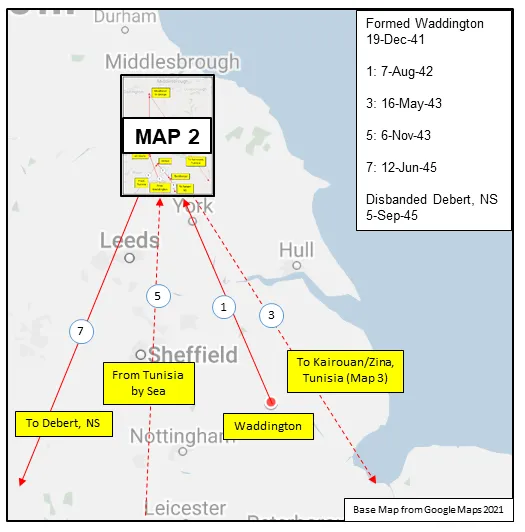
MAP 1: 420 Squadron Movements in England 1941-45 (right-click on image to display enlarged new tab)
|
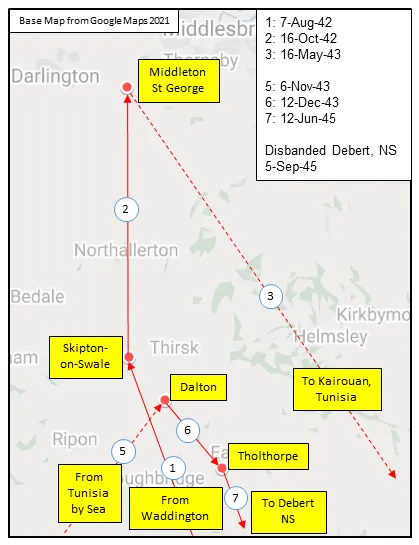
MAP 2: 420 Squadron Movements in Yorkshire and Durham 1942-45
|
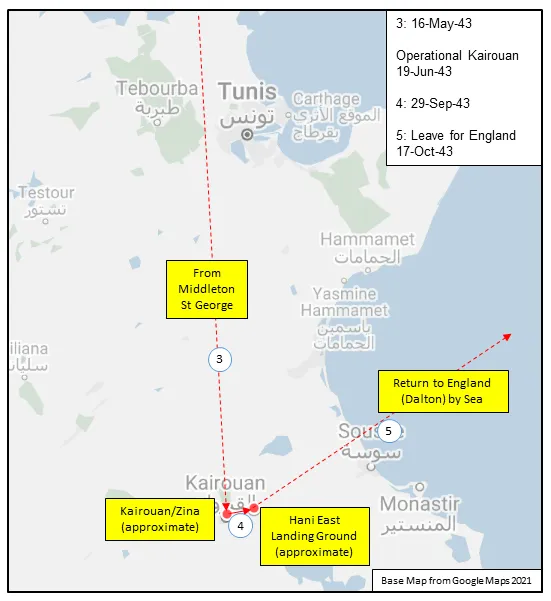
MAP 3: 420 Squadron Movements in Tunisia, North Africa 1943
|
420 Squadron History Summary 1941-45
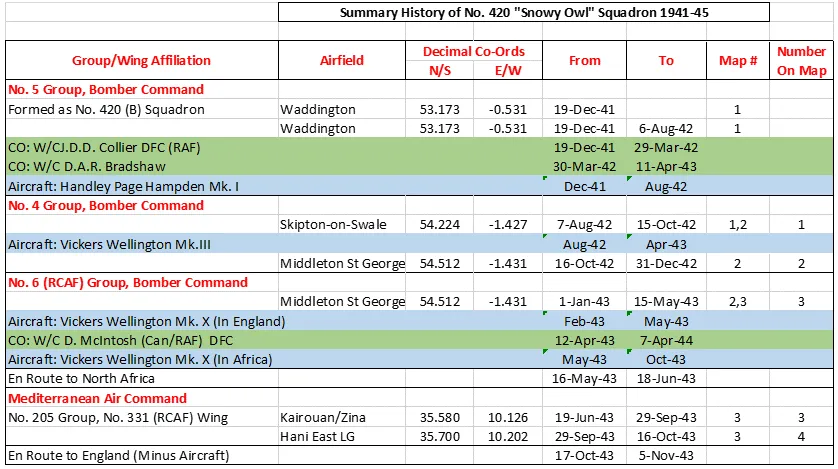
420 Squadron History Summary 1941-45 Page 2
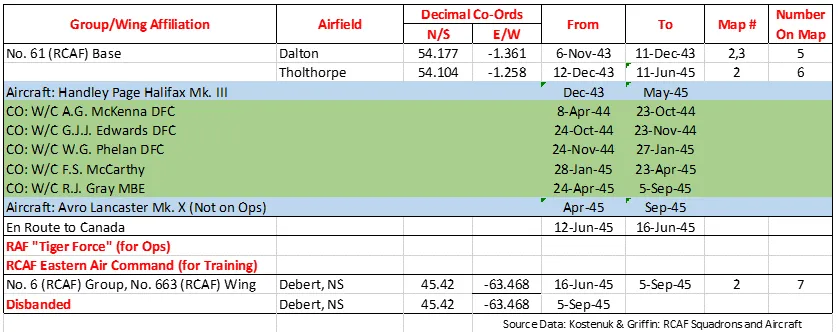
History of the Squadron Post-WWII (Aircraft: Harvard, Mustang, Silver Star, Tracker)
No. 420 Squadron reformed at London, Ontario ![]() on 15 September 1948, and flew North American Mustang and Harvard aircraft in a fighter role until the squadron disbanded on 1 September 1956. The squadron was re-formed as an Air Reserve squadron based initially at CFB Shearwater, Nova Scotia
on 15 September 1948, and flew North American Mustang and Harvard aircraft in a fighter role until the squadron disbanded on 1 September 1956. The squadron was re-formed as an Air Reserve squadron based initially at CFB Shearwater, Nova Scotia ![]() flying the de Havilland Canada Tracker aircraft that had once been the backbone of the Canadian Naval Air's anti-submarine program. As an Air Reserve Squadron it participated with regular fisheries patrols. It was one of the few active Air Reserve Squadrons in Canada and was paired with the Regular Force's 880 Squadron. The Squadron was rebased to CFB Summerside, Prince Edward Island
flying the de Havilland Canada Tracker aircraft that had once been the backbone of the Canadian Naval Air's anti-submarine program. As an Air Reserve Squadron it participated with regular fisheries patrols. It was one of the few active Air Reserve Squadrons in Canada and was paired with the Regular Force's 880 Squadron. The Squadron was rebased to CFB Summerside, Prince Edward Island ![]() when their base was downsized. No 420 Squadron was reduced to nil strength on 15 May 1995.
when their base was downsized. No 420 Squadron was reduced to nil strength on 15 May 1995.